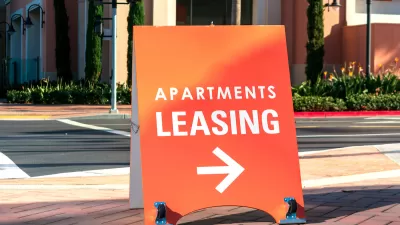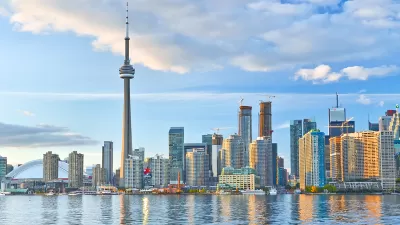Real estate prices in Toronto and Vancouver continue to rise, but there is not consensus about what is behind the growing housing crisis and the best solutions to pursue.

A debate piece looks at the issue of rising housing costs in Canadian cities and whether foreign buyers are the source of the problem. Bob Hutchings argues that non-residents are buying up a large percentage of housing in cities like Vancouver and leaving many of these units vacant. The result is increasing property costs, which is putting a strain on Canadian buyers and renters.
"What needs to be done, and with some great urgency, is to pass a law stating that non-residents can no longer buy in Canada, or, at the very least, have a 50 to 75 per cent tax on foreign buyers," says Hutchings.
Philip Cross, however, believes that restricting non-residents from buying homes is misplaced blame and will not solve Canada’s housing problems. The issue, he says, is a housing market that has not kept up with the increase in demand, fueled by lower interest rates and a crash in oil prices.
Supply has not met demand because of policies, such as zoning regulations and rent control, that have hindered construction, according to Cross. "The only sustainable long-term solution to soaring home prices in Toronto and Vancouver is to loosen the regulations stifling supply — a process underway at least in Ontario — while reining in demand."
FULL STORY: Should Canada ban non-residents from buying homes?

Study: Maui’s Plan to Convert Vacation Rentals to Long-Term Housing Could Cause Nearly $1 Billion Economic Loss
The plan would reduce visitor accommodation by 25,% resulting in 1,900 jobs lost.

North Texas Transit Leaders Tout Benefits of TOD for Growing Region
At a summit focused on transit-oriented development, policymakers discussed how North Texas’ expanded light rail system can serve as a tool for economic growth.

Why Should We Subsidize Public Transportation?
Many public transit agencies face financial stress due to rising costs, declining fare revenue, and declining subsidies. Transit advocates must provide a strong business case for increasing public transit funding.

How to Make US Trains Faster
Changes to boarding platforms and a switch to electric trains could improve U.S. passenger rail service without the added cost of high-speed rail.

Columbia’s Revitalized ‘Loop’ Is a Hub for Local Entrepreneurs
A focus on small businesses is helping a commercial corridor in Columbia, Missouri thrive.

Invasive Insect Threatens Minnesota’s Ash Forests
The Emerald Ash Borer is a rapidly spreading invasive pest threatening Minnesota’s ash trees, and homeowners are encouraged to plant diverse replacement species, avoid moving ash firewood, and monitor for signs of infestation.
Urban Design for Planners 1: Software Tools
This six-course series explores essential urban design concepts using open source software and equips planners with the tools they need to participate fully in the urban design process.
Planning for Universal Design
Learn the tools for implementing Universal Design in planning regulations.
City of Santa Clarita
Ascent Environmental
Institute for Housing and Urban Development Studies (IHS)
City of Grandview
Harvard GSD Executive Education
Toledo-Lucas County Plan Commissions
Salt Lake City
NYU Wagner Graduate School of Public Service





























